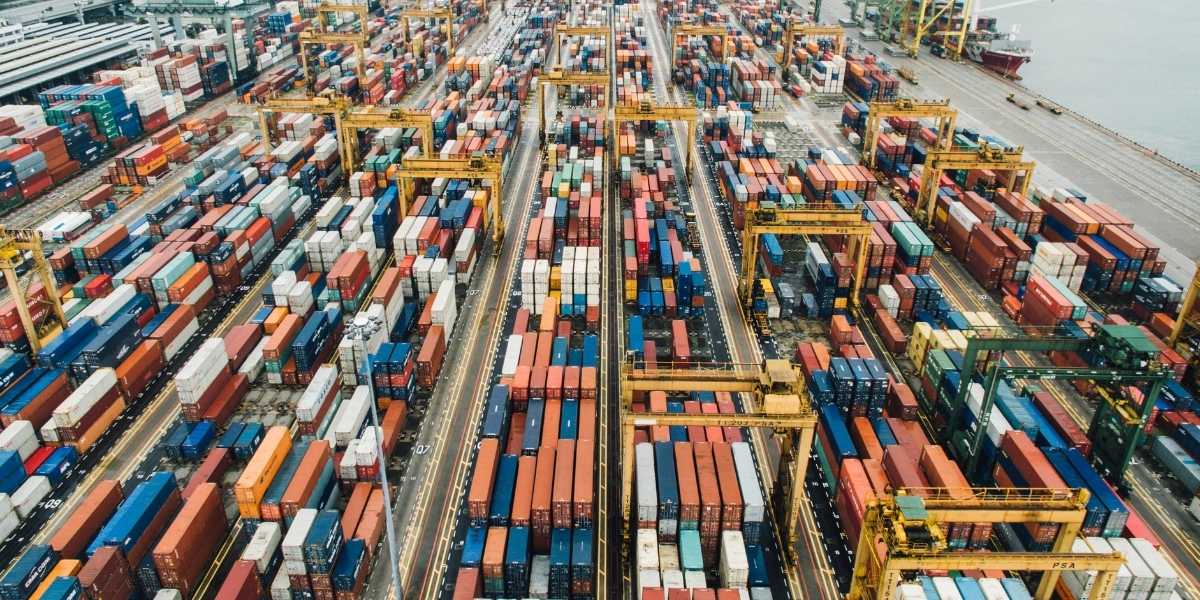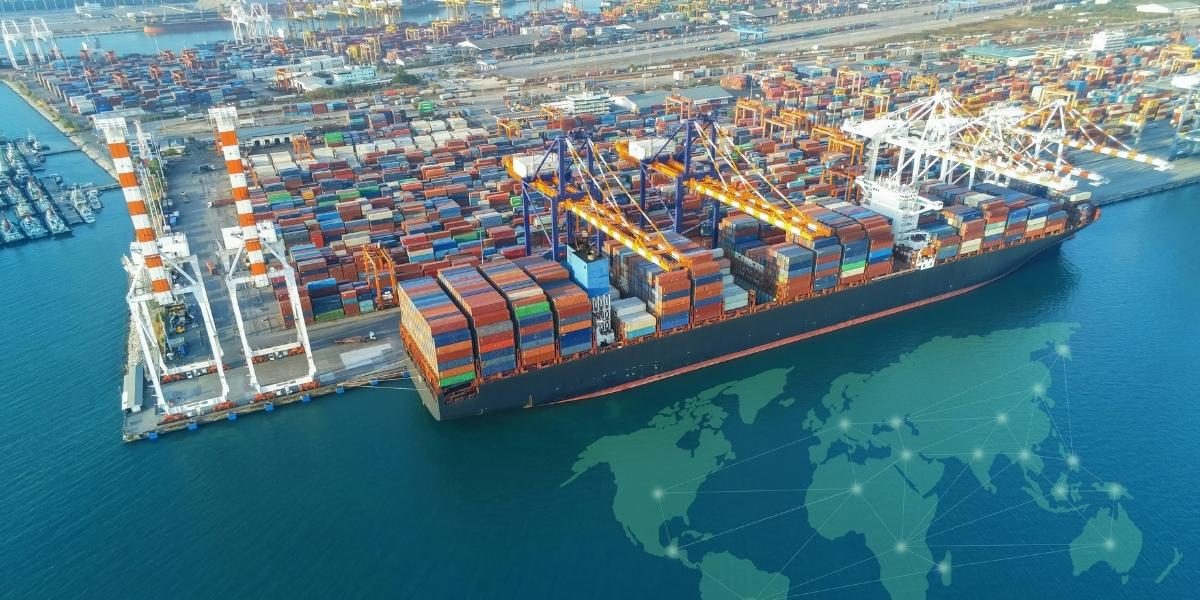Understanding America’s Global Trade: A Deep Dive into Key Industries
The United States, standing as one of the world’s largest economies, plays a crucial role in international commerce, with its sector dedicated to sending goods and services abroad contributing significantly to national prosperity and global relationships. Understanding what the US primarily ships to other countries offers vital insights into its industrial strengths, technological advancements, and agricultural capabilities. This intricate network of products and expertise exchanged across borders reflects the dynamic nature of the global marketplace and America’s competitive position within it. The makeup of the nation’s outbound shipments serves as a direct indicator of its economic competitiveness and innovation on a worldwide scale.
The importance of a robust sector dedicated to global sales cannot be overstated. It generates revenue, creates jobs, stimulates economic growth, and helps balance the trade deficit by bringing foreign currency into the country. Industries that are successful in the international arena often invest more in research and development, driving further innovation and maintaining a competitive edge. Furthermore, strong performance in this area can bolster diplomatic ties, as countries become interdependent through commercial relationships. These economic links foster greater understanding and cooperation, extending the nation’s influence far beyond its geographical boundaries.
Read Also: How the US Diamond Industry Impacts the Economy
While the specific products and services that top the charts for goods sent to other nations can shift due to global demand, technological breakthroughs, or geopolitical factors, certain broad categories consistently demonstrate America’s capacity to produce items highly valued abroad. From sophisticated machinery and cutting-edge technology to abundant agricultural products and essential energy resources, the US maintains a diverse and powerful profile of what it supplies globally. This deep dive will explore the key industries driving the nation’s international trade, shedding light on what the US mostly provides and why these goods and services are in such high demand.
What Are the Leading Categories of US Goods Sent Abroad?
One of the most significant categories in US goods provided to other nations is mineral fuels, including crude petroleum, refined petroleum products like gasoline, and natural gas. The United States has seen a remarkable transformation in its energy landscape over the past decade, driven by advancements in extraction technologies. This shift has propelled the nation from a net importer of certain energy resources to a major global supplier. The demand for these energy commodities is consistently high worldwide, making them a cornerstone of America’s trade balance and a substantial source of international revenue, illustrating a significant change in the global energy market dynamics.
Another dominant sector involves advanced machinery and equipment. This broad category encompasses a wide array of high-value products, including industrial machinery, computers, semiconductors, and telecommunications equipment. The US has long been a leader in technological innovation, and this is clearly reflected in the global demand for its sophisticated manufacturing and electronic components. These items are often integral to the industrial and technological development of other nations, showcasing American engineering and manufacturing excellence. The high-tech nature of these products ensures their continued prominence in the overall volume of goods shipped from the country.

Photo Credit: Unsplash.com
The transportation sector also features prominently in US goods reaching international markets, particularly aircraft, spacecraft, and motor vehicles. The aerospace industry, with giants like Boeing, is a world leader, producing commercial aircraft and parts that are essential for global aviation. Similarly, American automotive brands have a strong international presence, with vehicles and automotive parts finding markets across continents. These high-value durable goods represent significant investments from foreign buyers, underlining the quality and reliability associated with American manufacturing in these complex and competitive industries, securing a consistent flow of inbound capital.
Which Services Does the US Primarily Offer Globally?
Beyond tangible goods, the United States is also a global leader in the provision of services, which contribute substantially to its overall trade performance. Financial services represent a critical component of this segment, with US-based banks, investment firms, and insurance companies providing expertise and specialized assistance to clients worldwide. The robust and sophisticated nature of the American financial system attracts international businesses and individuals seeking reliable and innovative financial solutions. This supply of financial acumen generates significant revenue and reinforces the US’s position as a global financial hub.
Another major services category is intellectual property and technology services. This includes charges for the use of patented technologies, software licensing, research and development services, and various forms of digital content. The US is at the forefront of innovation in areas such as software development, biotechnology, and digital media, creating valuable intellectual assets that are in high demand internationally. Companies across the globe license American technologies and consume its digital services, highlighting the US’s role as a powerhouse of knowledge creation and technological advancement, which forms a key part of its overall foreign trade profile.
Travel and tourism, though often seen as inbound, also constitute a significant service provided to foreign entities. When international visitors come to the US, their spending on accommodation, food, transportation, and entertainment counts as an international sale of services. The appeal of American culture, natural landscapes, and major cities draws millions of tourists annually, injecting substantial foreign currency into the economy. Similarly, education services are a notable contribution, as international students pay tuition and living expenses while studying at US universities and colleges, contributing significantly to the services total and showcasing the global appeal of American higher education.
How Do US Goods and Services Sent Abroad Impact the Domestic Economy?
The volume and value of US goods and services shipped to other countries have a profound impact on the domestic economy, serving as a vital engine for economic growth and job creation. When American products and expertise are sold abroad, it stimulates production within the country, leading to increased activity in manufacturing plants, agricultural fields, and service-based industries. This heightened demand translates directly into more employment opportunities across various sectors, from factory workers and farmers to software engineers and financial analysts, demonstrating the direct link between global commerce and domestic prosperity. A thriving sector for international sales means more jobs and higher incomes for American workers.

Photo Credit: Unsplash.com
Strong performance in this area contributes directly to the nation’s Gross Domestic Product (GDP). Goods and services flowing out of the country are a component of the expenditure method for calculating GDP, meaning that an increase in these outward movements directly boosts economic output. This inflow of foreign capital helps to fund domestic investments, supports innovation, and can lead to a more favorable balance of trade. A competitive market for global sales encourages American businesses to be more efficient and innovative, which benefits domestic consumers through better products and services and strengthens the overall economic foundation.
The health of the sector focused on international sales also influences currency valuation and inflation. A high demand for US products and services can strengthen the dollar, making imports cheaper for American consumers but potentially making US offerings more expensive for foreign buyers in the long run. However, the overall positive impact often outweighs these considerations, as the sustained economic activity generated by these outbound shipments helps to maintain a stable economic environment and contributes to price stability. The economic ripple effects of a robust international trade industry extend far beyond initial sales, permeating various aspects of the national economy and fostering broader stability and growth.
What Challenges and Opportunities Shape US Global Sales?
Despite its strong position, the US sector for international sales faces various challenges, including global economic slowdowns, protectionist trade policies enacted by other nations, and fluctuations in currency exchange rates. Economic downturns in key trading partners can reduce demand for American goods and services, directly impacting the volume of products and services sent abroad. Additionally, the imposition of tariffs or non-tariff barriers by other countries can make US offerings less competitive, hindering market access and raising costs for international buyers. A strong US dollar can also make American products more expensive abroad, potentially dampening growth in this area.
Read Also: European Union Launches Probe into Chinese Electric Car Subsidies Amid Import Surge
These challenges are often met with significant opportunities for continued growth in US global sales. The ongoing technological revolution presents immense potential for the US to expand its provision of high-tech products and digital services, as innovation remains a core strength. Emerging markets around the world offer new avenues for American businesses seeking to diversify their customer base and tap into growing economies. As these nations develop, their demand for infrastructure, advanced technology, and consumer goods often rises, creating lucrative prospects for US companies shipping goods and services overseas.
Trade agreements and diplomatic efforts play a crucial role in facilitating and expanding US global sales. By reducing trade barriers, harmonizing regulations, and ensuring fair competition, these agreements can unlock new markets and streamline the process of international trade for American companies. Continuous investment in research and development, combined with supportive government policies and the adaptability of US industries, positions the nation to overcome challenges and capitalize on new opportunities. This proactive approach ensures that the US remains a formidable presence in global commerce, sustaining its vital engine of international supply.








